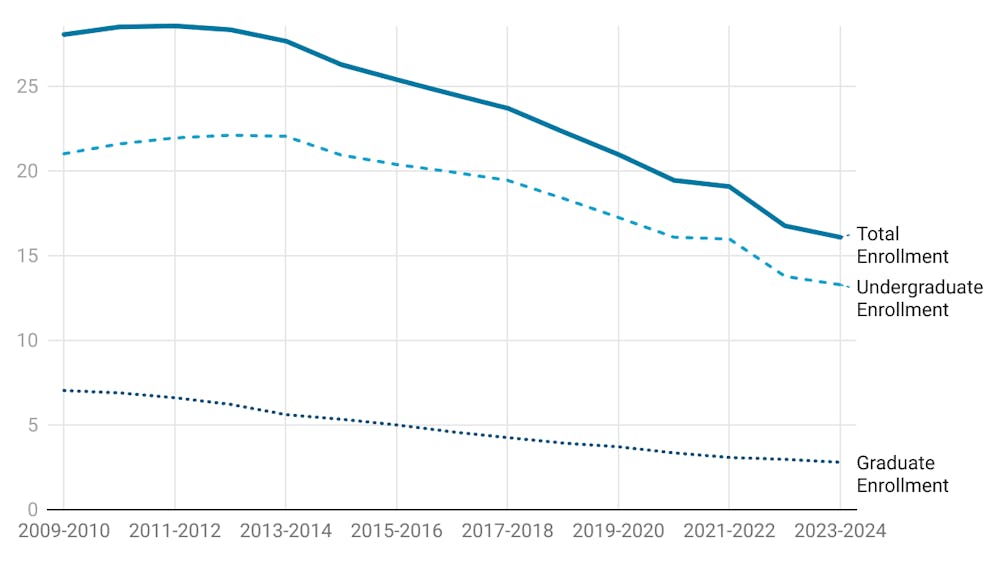When the Delaware Art Museum sold William Holman Hunt’s “Isabella and the Pot of Basil” they earned $4.25 million as well as the opprobrium of the art community. The Association of Art Museum Directors formally sanctioned the museum in June, and instructed its fellow members not to lend artwork to the Delaware Art Museum.
On July 18, 2013, the city of Detroit filed for Chapter 9 bankruptcy after decades of social and industrial decline, with an accumulated $18 billion in debt. Immediately, there was speculation that the city’s art collection, housed in the Detroit Institute of Arts, could be up for sale in order to settle the city’s debts.
That speculation was not completely unfounded. Syncora Guarantee Inc. and Financial Guaranty Insurance Company, two firms that had insured many of the municipal bonds that the city had defaulted on clamored for the art to be sold in order to stem their own losses. Many commentators also made the case that the city could not save its art, while it abandoned pensioners.
Kevyn Orr, the emergency manager appointed to correct the city’s finances by Gov. Rick Snyder of Michigan, commissioned the auction house Christie’s to appraise the art in the DIA. Christie’s appraisal was limited to pieces directly owned by the city, and yet still came to Orr with an estimate of $454 million to $867 million.
A second appraisal, which was more expansive, conducted by Artvest Partners at the behest of other creditors said the art collection was worth $4.6 billion. A third appraisal conducted by Victor Weiner Associates, hired by Financial Guaranty, said the art collection was worth $8.5 million.
Larger and larger numbers projected by the multiple appraisers don’t increase the enticement to sell the artwork; they decrease it. The differences in the estimates only further prove the speculative nature of the proposition. In fact, the report by Artvest Partners noted that the art collection may fetch much less than anticipated upon sale because the market would be flooded with so many pieces at once depressing prices.
And the $4.25 million that the Delaware Art Museum earned was half of the estimated $8.4 million and $13.4 million it was supposed to earn according to Christie’s.
The case of the Delaware Art Museum offers a contemporary example for those inside and outside of the city who think the art collection should be sold. Not only did the sale fail to raise the expected sum, it isn’t even close to what is needed by the museum to pay off debt from an expansion undertaken in 2005.
The Delaware Art Museum is prepared to sell more art in order to pay down debt, which is a no, no in the art community. And that community matters, for it has already inflicted sanctions on a museum that not only relies on the interest of the broader public, but deep-pocketed individuals in particular.
More to the point, like the Delaware Art Museum’s auction failed to solve its financial troubles, so to would the sale of the DIA’s work fail to make the city solvent. This is partly why Steven Rhodes, the federal bankruptcy judge overseeing Detroit’s case, has opposed the sale of the art. Because it doesn’t improve the city’s fiscal health in any way, and that matters to the process.
“Notwithstanding any power of the court, unless the debtor consents or the plan so provides, the court may not, by any stay, order, or decree, in the case or otherwise, interfere with any of the political or governmental powers of the debtor,” says subsection 904 of subchapter I of Chapter 9 bankruptcy. The statute continues to say that the court may not interfere with “any of the property or revenues of the debtor; or the debtor’s use or enjoyment of any income-producing property.”
In other words, neither creditors such as Syncora Guarantee and Financial Guaranty nor the federal bankruptcy court can order Detroit, the debtor, to sell the artwork.
It is in the spirit of the law that the quality of life of citizens be taken into consideration as well as monies owed to creditors. The loss of what can be called one of the America’s most encyclopedic collections of art does not improve the quality of life in the city.
The end result of the bankruptcy is for the city to exit the process better able to handle its debts, and serve its citizens.
Even before the crisis in Detroit, the American public has made its decision on whether art is art or an asset. Once art, public art, is transformed into a financial asset, unlike any other traded on the NASDAQ or Dow Jones, it has truly lost its value.








